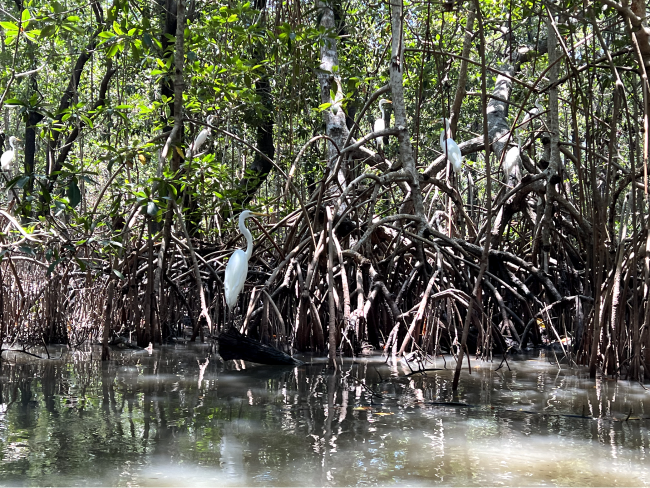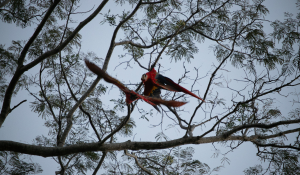The Rise of Biodiversity Credits: The Standards to Reach Nature Positive
Disclaimer: Currently, the terms “biodiversity credit”, “biocredit”, “biodiversity certificate”, and “nature credit” are used to refer to the same concept. The terms “nature” and “biodiversity” are sometimes used interchangeably.
As COP16 approaches, the end of 2024 stands to be a defining moment for the rise and culmination of biodiversity credits in various global markets. These credits are emerging as a crucial mechanism for pricing nature's value, and expanding beyond the established focus on carbon to foster investments in broader ecological protection and restoration. For more on what to expect from COP16, please read our article.
The Starting Point
Recognizing the deep connections between biodiversity loss and climate change, nearly 200 nations signed the historic Kunming-Montréal Global Biodiversity Framework (GBF) under the United Nations Convention on Biological Diversity (UNCBD) in December 2022. This landmark agreement lays out a strategic plan to reverse biodiversity loss and provides a roadmap for global biodiversity conservation by 2030.
The New Era of Biodiversity Credits
Since the adoption of the GBF, there has been an unprecedented surge in biodiversity market initiatives. Among these, biodiversity credits have gained traction as a market-based mechanism to quantify the cost of conserving and restoring ecosystems. This includes, but also goes beyond, the focus on carbon.
For more information on the impact of global warming on biodiversity, please read our article.
Biodiversity in Carbon Credits vs Biodiversity Credits
Biodiversity credits are related to, but distinct from, voluntary carbon credits. While a carbon credit represents a tonne of carbon dioxide equivalent avoided or removed from the atmosphere, biodiversity credits represent units of biodiversity restored or preserved, which may have a variety of distinctive characteristics, and experts are still working on a common definition.

More so, while carbon credits seek to achieve a standardized unit as part of a commodity market, biodiversity credits may not lend themselves to full equivalence. The market could develop to include different credits, such as credits for the type of nature restored and the metrics used to track improvements.
In the Voluntary Carbon Market (VCM), some projects, particularly Nature-based Solutions (NbS), generate biodiversity-linked carbon credits. Verified Carbon Standard’s (VCS) Climate, Community, and Biodiversity (CCB) Standards are applied as an additional certification to the Verified Carbon Standard (VCS), which focuses primarily on carbon accounting. CCB certification ensures that projects deliver positive biodiversity and social outcomes, but these are supplementary to the carbon credits, which remain the primary marketable unit.
However, the evolving recognition of biodiversity's intrinsic value is prompting a shift. While biodiversity has often been treated as a co-benefit in carbon markets, new developments are positioning it as a primary asset in its own right.
With new methodologies, frameworks, and pilot projects being tested globally, biodiversity credits are positioned to redefine how we value nature’s services. Let's explore how leading standards such as VCS and Plan Vivo are paving the way for the biodiversity credit market.
VCS' SDVista Nature Framework
In late 2023, Verra launched a public consultation for its new Nature Framework, an asset methodology nested under the Sustainable Development Verified Impact Standard (SDVISta). Unlike traditional offset schemes, Verra’s nature credits focus on preventing biodiversity loss rather than compensating for the damage.
Their definition of a biodiversity credit: A Nature Credit represents one quality hectare (Qha) of biodiversity uplift from a baseline as a result of project interventions. Their crediting is based on ecosystem conditions rather than hypothetical baselines.
Unit Measure Used: The credit unit is based on “Quality Hectares (Qha),” which represents the area (Extent) of ecosystem type adjusted for its Condition (quality of biodiversity). This allows for a more nuanced measure than simply using area.
Verification Cycles: The verification cycle is every five years, in line with project monitoring, which includes measuring Extent and Condition. Projects must report both Extent (area) and Condition (quality of biodiversity) regularly.
Claims and Communications Provisions: Nature Credits may not be used for offsetting; they are seen as positive investments in nature rather than mitigation tools. While carbon credits can be used to reach Net-Zero, Nature Credits can be used to reach Nature Positive. Any misrepresentation leads to penalties like a freeze on future credit issuance.

Plan Vivo's PV-Nature Standard
Plan Vivo’s biodiversity credits focus on community-led conservation and restoration projects, particularly in developing countries. The methodology aims to enhance biodiversity through multi-metric approaches that monitor ecosystem health and biodiversity across various metrics. This includes species richness, diversity, and habitat connectivity.
Their definition of a biodiversity credit: Plan Vivo’s biodiversity credits are based on a multimetric approach, summarizing five pillars of biodiversity, which represent different facets of ecosystem health and biodiversity.
Unit Measure Used: The unit of measure is a multimetric, which combines multiple biodiversity indicators, including species richness, diversity, habitat structure, and more, aggregated into a single score that represents overall biodiversity health.
Verification Cycles: Plan Vivo requires third-party verification every five years. This involves recalculating biodiversity metrics and ensuring that projects meet the targets set at the beginning.
Claims and Communications Provisions: Plan Vivo requires transparent communication about the use of biodiversity credits. The certificates generated reflect the biodiversity enhancements, and claims must be tied to project outcomes and verified data.
As the frameworks and methodologies around biodiversity credits evolve, they offer new pathways for investing in nature's protection and restoration. Unlike carbon credits, biodiversity credits are focused on enhancing ecosystem health and preserving biodiversity in a way that reflects its intrinsic value, rather than just as a co-benefit to carbon reduction. These credits represent a shift towards valuing nature for its own sake, positioning it as a critical asset in achieving global environmental goals. As we look towards the future, particularly with COP16 on the horizon, biodiversity credits will likely play a pivotal role in shaping the next phase of sustainable market mechanisms and global conservation efforts.
If you are unaware of the differences between COP16 and COP29, please read our article.
Common Q&As
At COP16, governments will need to review the state of implementation of the Kunming-Montreal Global Biodiversity Framework. The Parties to the Convention will need to show their alignment of the National Biodiversity Strategies and Action Plans (NBSAPs) with the Framework.
For more information, read our article: What to expect from COP16 UN Biodiversity Conference in Colombia?
Companies, particularly those involved in agriculture, construction, and resource extraction, should aim to minimize their impact on natural habitats. Strategies like precision agriculture, vertical farming, and sustainable forestry practices can limit the conversion of wild areas into developed land.
For a deeper dive into this read our article:
The Impact of Global Warming on Biodiversity: How Can Companies Help Preserve It?
Both the Climate COP and Biodiversity COP serve as platforms to address two interconnected yet distinct global environmental challenges—climate change and biodiversity loss—both of which originated from the commitments made at the 1992 Rio Earth Summit.
For more information, read our article: Biodiversity COP: How does it differ from the Climate COP?
Share this
You May Also Like
These Related Stories

Biodiversity COP: How does it differ from the Climate COP?

The COP16 UN Biodiversity Conference in Colombia explained


